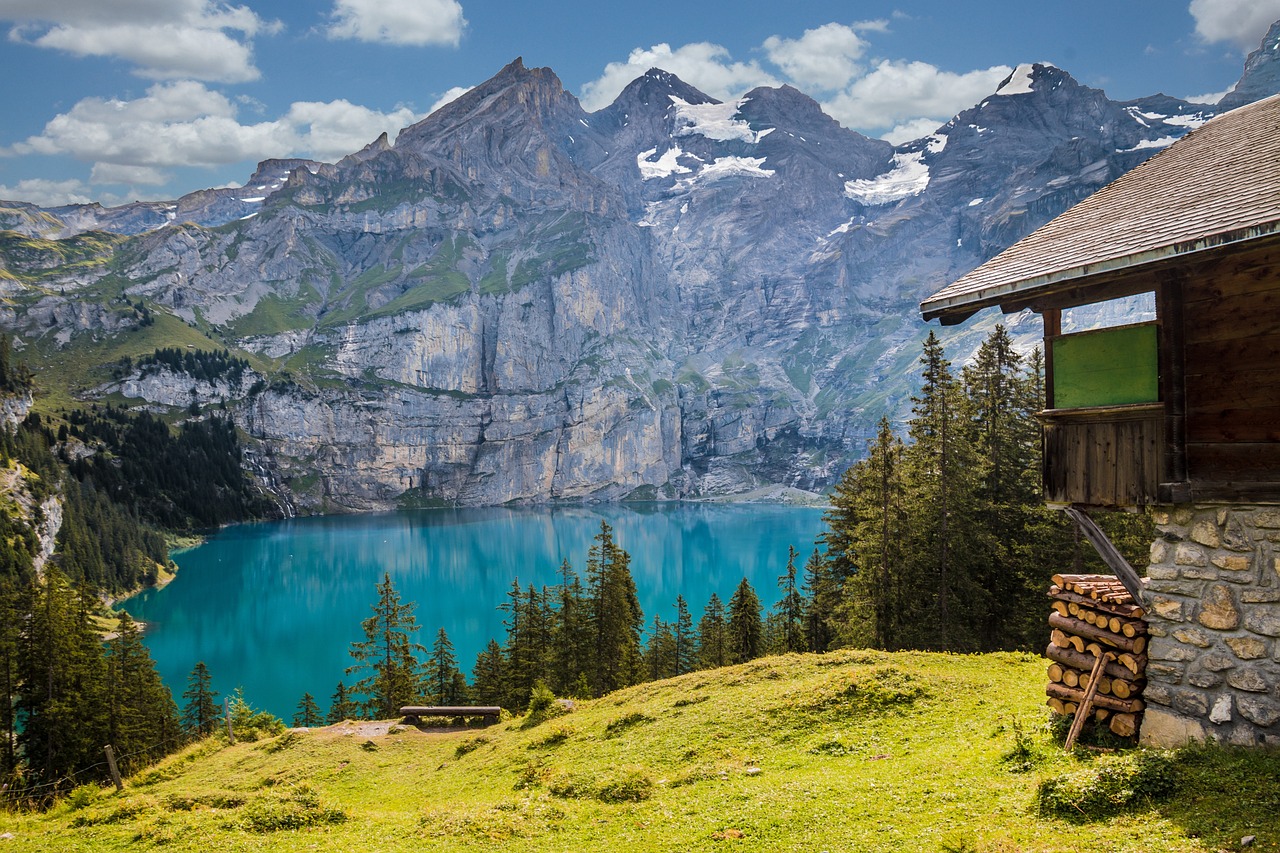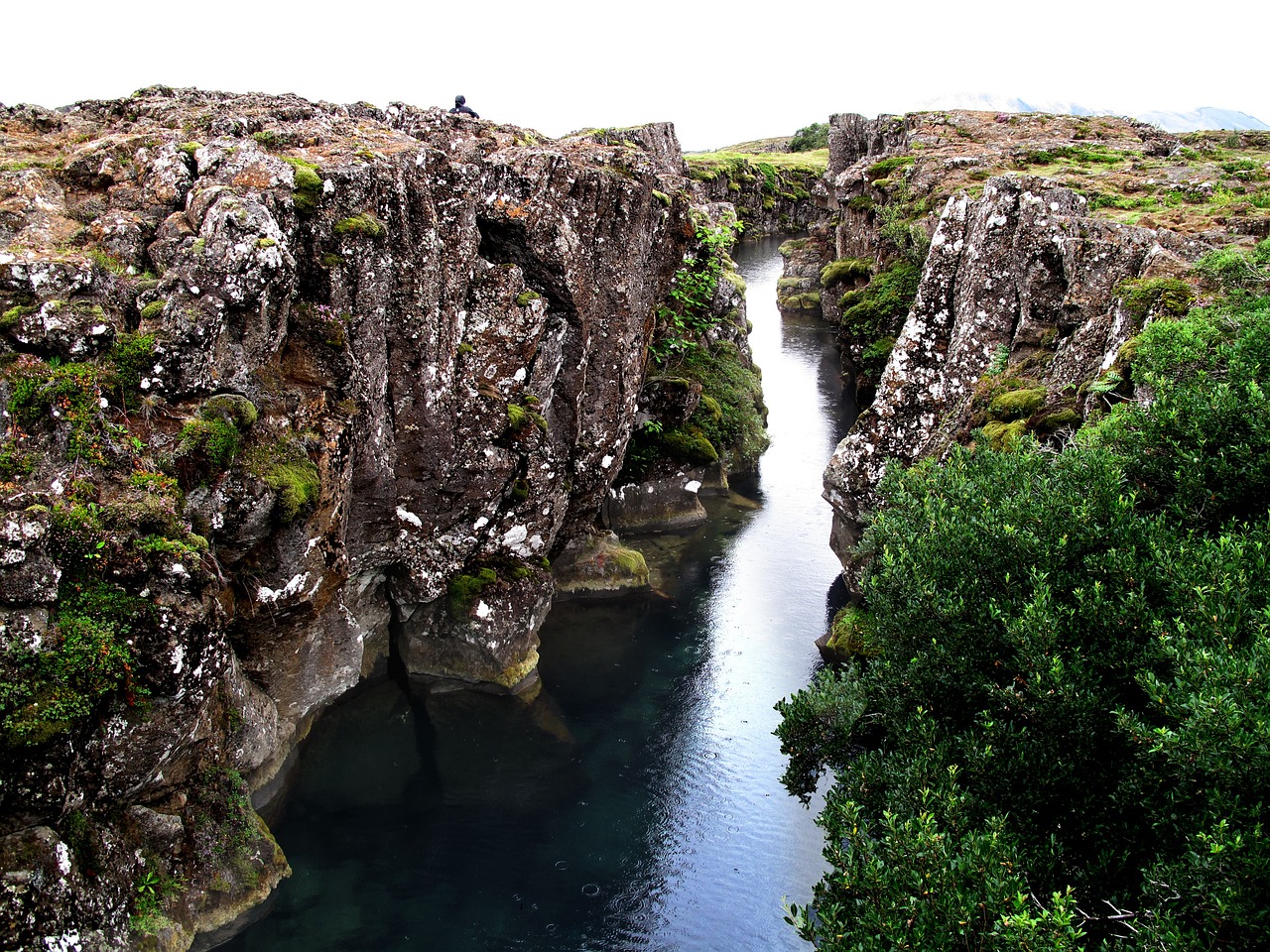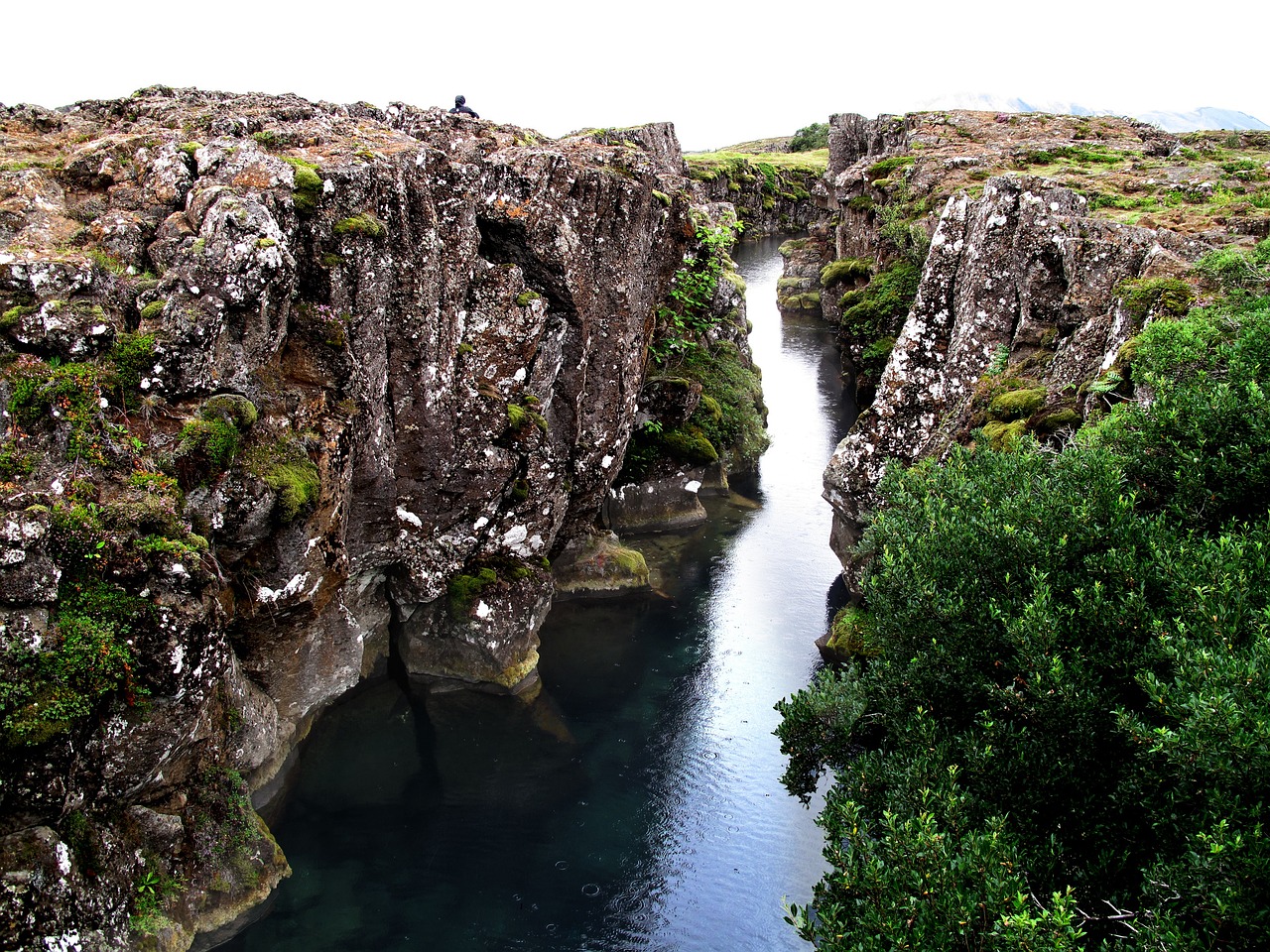Table of Contents
Maine, often celebrated for its rugged coastline and pristine wilderness, is a land of extraordinary natural beauty. Yet, beneath its breathtaking landscapes lies a rich geological tapestry that spans millions of years. From ancient mountains to glacial wonders, Maine’s unique geology offers a captivating journey through time and a profound understanding of the state’s geological heritage. In this article, we will delve into the fascinating geological history of Maine, uncovering the forces that shaped its landforms and the remarkable stories etched in its rocks.
“Maine’s geological history is like an open book, each layer of rock and every rugged outcrop telling a story that unfolds over eons. As we explore this captivating narrative, we unearth not only the forces that have shaped Maine’s landforms but also the awe-inspiring wonders concealed beneath its natural beauty.
Ancient Mountains: Maine’s geological tale begins with ancient mountains that once stood tall and majestic. Over millions of years, these towering peaks, formed through tectonic collisions, weathered the relentless forces of erosion. Today, their remnants, such as the granite core of Mount Katahdin, remind us of the primordial power that once dominated this region.
Glacial Sculptors: The next chapter in Maine’s geological saga belongs to the glaciers. During the last ice age, colossal ice sheets advanced and retreated, leaving an indelible mark on the landscape. These glaciers carved out valleys, shaped hills, and created the state’s distinctive lakes and rivers. The awe-inspiring beauty of Acadia National Park, with its U-shaped valleys and glacially polished granite peaks, is a testament to the profound influence of glaciers.
Coastal Wonders: Maine’s rugged coastline, celebrated for its dramatic beauty, is a product of the relentless interaction between land and sea. Erosion by ocean waves has shaped sea cliffs, sea stacks, and picturesque arches along the coast. The iconic Portland Head Light, perched on craggy cliffs, stands as a sentinel to the coastal forces that have been at work for millennia.
Mineral Treasures: Beneath Maine’s soil, hidden treasures await discovery. The state’s geological diversity has given rise to a rich variety of minerals, including tourmaline, amethyst, and garnet. These gems, often found in pegmatite deposits, have been sought after by collectors and enthusiasts for generations.
Aquatic Ecosystems: Maine’s geology is also intrinsically linked to its aquatic ecosystems. The composition of the bedrock affects the chemistry of its lakes and rivers, influencing the types of aquatic life that can thrive in these waters. Understanding this relationship is essential for preserving the health and biodiversity of Maine’s aquatic ecosystems.
Human Interaction: Maine’s geological history is not just a tale of natural forces but also one of human interaction. The state’s history is intertwined with its geological resources, from the granite quarries that supplied building materials for cities across the nation to the mines that extracted valuable minerals.
In delving into Maine’s geological heritage, we gain not only a deeper appreciation for its natural beauty but also a profound understanding of the dynamic and interconnected processes that have shaped its landforms and ecosystems. Maine’s geological history invites us to embark on a timeless journey through the forces of nature, showcasing the enduring power of Earth’s geological processes and the remarkable stories etched in its rocks.”
To expand your knowledge on this subject, make sure to read on at this location: Byways in Parks – Geology (U.S. National Park Service)
The Foundation of Maine’s Geology
Maine’s geological story begins over 400 million years ago when the region was part of a vast ancient ocean. The remnants of this ancient seabed can still be seen in the state’s coastal limestone formations, such as those found in Acadia National Park. These rocks, rich in marine fossils, bear witness to a time when Maine was submerged beneath a tropical sea.
Maine’s geological narrative is a fascinating journey through eons of Earth’s history, a tale that unfolds over millions of years and reveals the profound transformations the region has undergone.
1. Ancient Oceanic Origins: Over 400 million years ago, Maine’s terrain was radically different from what we see today. During that era, this land was submerged beneath a vast, ancient ocean, teeming with marine life and geological activity. The remnants of this oceanic past still echo through Maine’s landscapes.
2. Coastal Limestone Formations: Coastal limestone formations, particularly those found in the magnificent Acadia National Park, serve as geological time capsules. These rocks bear witness to the geological processes that unfolded during the state’s ancient history. They hold within them the secrets of a time when Maine’s coastal areas were submerged beneath the waters of a tropical sea.
3. Rich Fossil Records: The limestone formations of Maine are not just geological wonders; they are also rich repositories of marine fossils. Embedded within these rocks are the remains of prehistoric marine creatures that thrived in the warm, tropical waters that once covered the region. These fossils provide invaluable insights into the biodiversity and ecological conditions of ancient oceans.
4. Geological Evolution: The geological evolution of Maine did not stop with the retreat of the ancient sea. Over millions of years, geological forces, including tectonic plate movements, glaciation, and erosion, have shaped the state’s diverse landscapes. From rugged coastlines to rolling hills, the geological history of Maine continues to be written in its landforms.
5. Glacial Legacy: The most recent chapter in Maine’s geological history is the legacy of the last Ice Age. Glaciers sculpted the state’s topography, leaving behind characteristic features like moraines, drumlins, and the iconic Acadia mountains. Evidence of glaciation can be found throughout Maine, serving as a testament to the immense forces of nature.
6. Human Interaction: In addition to its geological heritage, Maine’s history is intertwined with human activities. Indigenous communities have inhabited the region for millennia, and their presence has left cultural imprints on the landscape. The use of natural resources, such as granite and timber, has played a significant role in shaping Maine’s human history and economy.
7. A Geological Journey: Exploring Maine’s geological history is not just a scientific endeavor; it’s also an opportunity for people to connect with the deep-time story of the Earth. Visitors to Acadia National Park, for instance, can walk through time as they traverse limestone formations, examining fossils that reveal the ancient world that once existed beneath the waves.
In conclusion, Maine’s geological narrative is a captivating journey through geological epochs, each layer of rock and each fossil telling a part of the state’s ancient story. From its origins as part of an ancient ocean to the shaping forces of glaciation and the enduring presence of human civilization, Maine’s geological history is a testament to the ever-changing nature of our planet and the rich tapestry of life that has called it home over millions of years.
For additional details, consider exploring the related content available here National Mall and Memorials Washington DC

Mountain-Building and Tectonic Shifts
The formation of Maine’s mountain ranges is a testament to the colossal forces that have shaped the state’s landscape. Approximately 370 million years ago, during a period of mountain-building known as the Acadian Orogeny, the land was pushed and folded, giving rise to the rugged peaks and valleys we see today. The majestic Appalachian Mountains, including Maine’s highest peak, Mount Katahdin, are a product of this geological upheaval.
The geological history of Maine’s mountain ranges is a captivating narrative of Earth’s ancient and powerful forces that have sculpted the state’s breathtaking terrain. Around 370 million years ago, during the Acadian Orogeny, a remarkable geological event unfolded, leaving a profound and enduring mark on the landscape we now admire. Here, we embark on a journey through time to explore this remarkable chapter in Maine’s geological story:
Ancient Tectonic Drama: The Acadian Orogeny was a geological period of immense significance, characterized by the relentless collision of tectonic plates. In the case of Maine, it involved the convergence of ancient continents, setting the stage for an extraordinary transformation.
The Push and Fold: As tectonic plates collided, unimaginable forces were unleashed, causing the Earth’s crust to buckle and fold. The landmass that would become Maine experienced tremendous compression, with layers of rock and sediment crumpling and thrusting upward.
Rising Peaks: The consequences of this colossal collision were nothing short of monumental. The land, previously relatively flat, began to rise in dramatic fashion. Mountains emerged, their peaks piercing the sky, and valleys were carved out between them. It was during this upheaval that the mighty Appalachian Mountains, stretching from the American South into Maine, were born.
Maine’s Majestic Peaks: Among these newly formed mountains, one stands as a symbol of nature’s grandeur and Maine’s rugged beauty—Mount Katahdin. As the highest peak in the state, Mount Katahdin’s prominence is a testament to the intensity of the geological forces at play during the Acadian Orogeny. Its towering presence, with its knife-edge ridges and pristine lakes at its base, continues to captivate and challenge adventurers to this day.
Enduring Legacy: The legacy of the Acadian Orogeny is etched into Maine’s geological tapestry. The mountains and valleys created during this period have not only shaped the state’s topography but have also influenced its climate, ecosystems, and cultural heritage.
Outdoor Wonderland: Today, Maine’s mountainous terrain is a cherished playground for outdoor enthusiasts. It offers hiking, rock climbing, skiing, and countless other recreational opportunities. Beyond its recreational value, these mountains also serve as watersheds, supplying clean and abundant water to the region.
Geological Marvel: Maine’s mountain ranges, born from the titanic clash of tectonic plates, are not only geological marvels but also enduring symbols of nature’s artistry and resilience. They remind us of the ever-changing, ever-shaping forces that have crafted our planet over eons.
In conclusion, the story of Maine’s mountain ranges is a testament to the immense geological forces that have shaped our world. It invites us to appreciate the deep history written in the contours of the land and to stand in awe of the enduring majesty of the Appalachian Mountains, including the iconic Mount Katahdin. As we explore these landscapes, we become part of the ongoing narrative of Earth’s transformation, a story that continues to inspire and humble us with its grandeur and complexity.
To delve further into this matter, we encourage you to check out the additional resources provided here: Convergent Plate Boundaries—Collisional Mountain Ranges …

Glacial Epoch: A Frozen Legacy
One of the most defining chapters in Maine’s geological history is the last Ice Age, which occurred roughly 2.6 million to 11,700 years ago. Enormous glaciers, some over a mile thick, covered the land, sculpting its features in dramatic fashion. The effects of this glacial activity are still visible today, with Maine’s iconic lakes, valleys, and distinctive “erratic” boulders, transported and deposited by glaciers, serving as enduring reminders of this frozen epoch.
The legacy of Maine’s last Ice Age endures as a testament to the raw power of nature’s icy grip. These colossal glaciers, whose sheer weight rivaled mountains, left an indelible mark on the landscape. As they advanced and retreated, they meticulously shaped the terrain, gouging out deep valleys and etching out the strikingly beautiful features that define the state today.
Among the most iconic and picturesque features born from this glacial dance are Maine’s pristine lakes. These deep, clear bodies of water, like sparkling jewels set within the rugged landscape, owe their origins to the erosive power of glaciers. Carving out basins as they moved, the glaciers created homes for a myriad of aquatic life and became tranquil havens for outdoor enthusiasts.
Venturing into Maine’s valleys is like stepping into a time capsule of geological history. These dramatic, U-shaped valleys are the result of glacial activity, shaped over millennia as ice surged and receded. They provide a glimpse into the grandeur of the Ice Age, with their steep walls and lush, green bottoms.
Yet, perhaps the most intriguing remnants of this frozen era are the “erratic” boulders scattered across the state. These massive rocks, some weighing hundreds of tons, were plucked from distant landscapes by the glaciers and transported for hundreds of miles before being deposited in their current locations. Each erratic boulder tells a story of migration, as they were carried by the ice, often resting in seemingly improbable places. These geological travelers serve as both natural wonders and puzzles, challenging geologists to unravel their journeys through time.
Maine’s geological history, marked by the last Ice Age, is a living testament to the forces that have shaped our planet. As we stand in awe of the state’s lakes, valleys, and erratic boulders, we are reminded of the enduring power and artistry of the natural world, where the echoes of ancient glaciers continue to resonate in the present day.
For additional details, consider exploring the related content available here A comprehensive guide to the country’s 63 national parks …

The Gulf of Maine and Coastal Features
The Gulf of Maine, an extension of the Atlantic Ocean, has played a crucial role in shaping Maine’s coastline. Coastal landforms, including sandy beaches, rocky cliffs, and offshore islands, bear witness to the constant interplay between land and sea. The state’s rugged, convoluted shoreline, with its numerous bays and inlets, offers abundant opportunities for exploration and discovery.
The Gulf of Maine, an extension of the Atlantic Ocean, has played a crucial role in shaping Maine’s coastline, but its influence goes beyond mere geography; it’s deeply woven into the fabric of Maine’s identity. Coastal landforms, including sandy beaches that stretch for miles, dramatic rocky cliffs that stand as ancient sentinels against the sea’s relentless power, and the allure of offshore islands, bear witness to the constant interplay between land and sea.
Sandy Beaches: Maine’s coastline is graced with beautiful sandy beaches that are not only picturesque but also inviting for sunbathers, swimmers, and families looking to create lasting memories. These beaches, like Old Orchard Beach and Sand Beach in Acadia National Park, offer a tranquil escape from the hustle and bustle of daily life. They are places where the rhythmic sound of waves breaking on the shore provides a soothing backdrop to long walks, sandcastle-building contests, and picnics by the sea.
Rocky Cliffs: Alongside the sandy shores, you’ll find the rugged majesty of rocky cliffs that seem to defy the relentless pounding of the waves. These cliffs, like those found at Pemaquid Point or Thunder Hole in Acadia National Park, are awe-inspiring natural sculptures. They offer not only breathtaking panoramic views but also a glimpse into the enduring power of the natural world.
Offshore Islands: Maine’s coastal magic extends beyond the mainland to a constellation of offshore islands, each with its own unique character. Some, like Mount Desert Island, boast vibrant communities, while others, like the remote and pristine Isle au Haut, offer a sense of solitude and untouched wilderness. These islands are not just picturesque; they are living ecosystems, home to diverse wildlife and delicate ecosystems, making them perfect for exploration and ecological discovery.
Abundant Exploration Opportunities: Maine’s convoluted shoreline, dotted with numerous bays and inlets, presents an array of opportunities for exploration and discovery. Kayakers can paddle through labyrinthine waterways, while hikers can traverse coastal trails that reveal hidden coves and secluded vistas. Birdwatchers and nature enthusiasts are drawn to these shores, where they can observe migratory birds, marine life, and the changing tides that shape the coastline.
The Gulf of Maine is not just a geographical feature; it’s a source of inspiration and wonder. It fuels a deep appreciation for the intricate relationship between land and sea, and it beckons explorers, artists, scientists, and dreamers to discover its treasures. Maine’s coastline, with its diverse landforms and ecosystems, invites us to connect with the natural world, forging a bond that transcends generations and reminds us of the enduring beauty of our planet’s coastal wonders.
If you’d like to dive deeper into this subject, there’s more to discover on this page: America’s Byways | America’s Byways

Minerals and Natural Resources
Maine’s geology also holds a treasure trove of minerals and natural resources. The state’s granite quarries, for instance, have supplied some of the finest building materials in the nation, including the granite used in the construction of the Washington Monument. Maine’s mineral deposits are as diverse as its landscapes, offering resources such as limestone, feldspar, and gemstones like tourmaline.
Maine’s geological wealth extends far beyond its captivating landscapes; it is also a repository of valuable minerals and natural resources that have played pivotal roles in the state’s history and continue to contribute to its economy and cultural identity.
The granite quarries of Maine, in particular, have garnered international recognition for their quality and durability. The granite extracted from these quarries has been used in the construction of some of the nation’s most iconic landmarks, including the majestic Washington Monument in Washington, D.C. The enduring beauty and resilience of Maine granite are a testament to the state’s geological heritage and its contribution to the architectural marvels of the United States.
Limestone, another vital resource found in Maine, is integral to various industrial processes, including cement production. Maine’s limestone deposits have supported infrastructure development and played a critical role in the construction industry. Additionally, limestone plays a role in mitigating soil acidity, benefiting agriculture in the state.
Feldspar, a versatile mineral, has diverse applications in the ceramics and glass industries. Maine’s feldspar deposits have been instrumental in the production of high-quality ceramics and glassware. This resource has contributed to the state’s industrial heritage and manufacturing prowess.
One of Maine’s most captivating mineral treasures is tourmaline. Known for its stunning variety of colors, tourmaline is found in the state’s western mountains and is celebrated by gem enthusiasts worldwide. The exquisite hues of Maine’s tourmaline, ranging from deep green to vibrant pink, make it a sought-after gemstone, and it is often featured in jewelry designs that showcase the state’s natural beauty.
The exploration and responsible extraction of these minerals align with Maine’s commitment to sustainable resource management. Conservation efforts and regulatory measures ensure that mineral extraction is conducted in an environmentally responsible manner, preserving the state’s natural landscapes and habitats.
Maine’s geological heritage, with its diverse mineral resources, serves as a reminder of the state’s enduring connection to the Earth’s geological processes. It underscores the importance of responsible stewardship and sustainable practices to ensure that these treasures continue to benefit both the state’s economy and the wider world. Maine’s geological wealth is not only a source of pride but also a testament to the harmonious coexistence of natural beauty and valuable resources.
Explore this link for a more extensive examination of the topic: What are igneous rocks? | U.S. Geological Survey

Conservation and Appreciation
Preserving Maine’s geological heritage is a shared responsibility. Many geological sites are designated for protection within state parks and national monuments. Acadia National Park, with its unique coastal formations and granite mountains, is a prime example of a protected geological treasure.
Appreciating Maine’s geological wonders extends beyond scientific study. It is an invitation to explore, learn, and appreciate the stories etched in its rocks and carved into its landscapes. The state’s geological heritage offers not only a deeper understanding of the natural world but also a profound connection to the timeless processes that have shaped Maine’s breathtaking beauty.
Additionally, you can find further information on this topic by visiting this page: Landmark Highlights 2021 (U.S. National Park Service)

Maine’s unique geology is a testament to the enduring power of geological forces and the intricate history of our planet. It invites us to embark on a journey through time, exploring ancient oceans, towering mountains, and glacial landscapes. By preserving and appreciating Maine’s geological heritage, we not only gain insight into the past but also reaffirm our commitment to safeguarding the state’s natural wonders for generations to come. Maine’s geological tapestry is a living testament to the ever-evolving story of our planet, and it invites all who venture here to become part of that narrative.
Maine’s unique geology is a testament to the enduring power of geological forces and the intricate history of our planet. It is a remarkable invitation to embark on a captivating journey through time, delving deep into the annals of Earth’s evolution. Here, we can traverse ancient oceans, stand in awe of once towering mountains, and trace the imprints of colossal glaciers that sculpted the landscapes we see today.
The geological wonders of Maine provide us with a rare opportunity to connect with the immense forces that have shaped our world over millions of years. The exposed rock formations and geological features serve as windows into the distant past, allowing us to peer back through the eons and witness the ever-changing face of our planet.
By preserving and appreciating Maine’s geological heritage, we not only gain valuable insights into the past but also reaffirm our commitment to safeguarding the state’s natural treasures for generations to come. It is a declaration that we recognize the profound importance of these geological formations, not just as relics of history but as living testaments to the dynamic processes that continue to shape our world.
Maine’s geological tapestry is a living testament to the ever-evolving story of our planet. It reminds us that the Earth is in a perpetual state of transformation, and we are fortunate witnesses to its ongoing narrative. Each visit to a geological site in Maine is an opportunity to become part of that narrative, to stand in humble awe of the immense geological forces that have sculpted our world and to play a role in its conservation.
As we explore these ancient landscapes, we are not just passive observers but active participants in the preservation of this geological legacy. We become stewards of these natural wonders, entrusted with the responsibility to protect and cherish them for the benefit of future generations.
Maine’s geological heritage, with its rugged coastlines, mysterious caves, and ancient rock formations, beckons all who venture here to become part of this awe-inspiring story. It is an invitation to learn, to marvel, and to contribute to the ongoing saga of our planet’s geological evolution. In doing so, we honor our connection to the Earth and pledge to safeguard the marvels that grace the landscapes of Maine for all time.
If you’d like to dive deeper into this subject, there’s more to discover on this page: Geology of Missouri | Missouri’s Natural Heritage | Washington …
More links
Explore this link for a more extensive examination of the topic: Geologic Features and Formations – Acadia National Park (U.S. …
